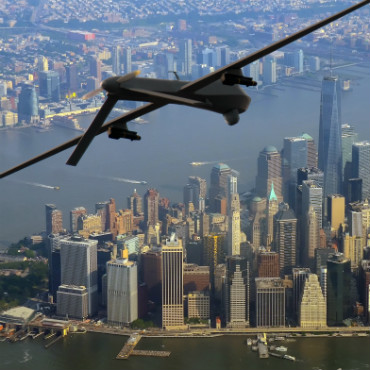Congress hears from small biz on drone rules

A month after the FAA's rules for integrating commercial drones into U.S. airspace took effect, commercial operators see a bright future, but also want more guidance.

Small businesses are driving the demand for commercial drone aircraft in the U.S. The federal government has taken first steps in rolling out drone regulations, and industry representatives came to Capitol Hill this week to argue that those rules need to be refined.
"Small businesses have a particular interest in drone technology because not only are they users of drones, but also manufacturers," said Rep. Alma Adams (D-N.C.), ranking member of Committee on Small Business Subcommittee on Investigations, Oversight and Regulations, during a Sept. 27 hearing on the FAA's new rules for Unmanned Aerial Systems.
According to one drone expert on the panel, tens of thousands of commercial drone operators are out there.
"Of the more than 530,000 people who have registered their UAS with the FAA since last December," said Brian Wynne, president and CEO of the Association for Unmanned Vehicle Systems International, "about 20,000 have indicated they are commercial operators." The FAA, he said, expects that more than half a million commercial drones could be flying in commercial applications in the next year.
The new FAA rules are a good first step, but the agency must keep up with galloping technological advances and be more responsive in real-time to operators, said Lisa Ellman, co-executive director of the Commercial Drone Alliance.
The agency's new regulations, for instance, shouldn't just be a burdensome replacement for its previous paperwork-intensive case-by-case waiver process, said Ellman, who is a partner at Hogan Lovells and a chair of the firm's Global Unmanned Aircraft Systems Group. It also shouldn't be tied to older aviation regulations. With the new UAS rules, she said, "the government has essentially bolted the new small UAS regulations onto the old manned aviation regulatory structure. Meanwhile, a five pound UAS has almost nothing in common with a large manned aircraft."
Ellman urged the FAA to take a fresh approach in how it thinks about unmanned aerial systems.
"With some creativity, we should have drafted a different set of rules for UAS and other small vehicles that do not cite and relate back to manned aircraft regulations," she said. Instead, the current rules "require companies to jump through legal hoops in order to obtain relief from those same manned aircraft regulations."
NEXT STORY: Senate blocks vote on funding bill


